Movilidad eléctrica
Soluciones para los múltiples retos de la integración en red de los vehículos eléctricos.
Con el aumento de la cuota de vehículos eléctricos (VE), surgen numerosas cuestiones para el sector eléctrico en relación con la integración en la red:
- Integración de los VE en las redes: ¿capacidad de acogida de las redes de distribución y ubicación óptima de las estaciones de carga (rápida)?
- Alternativas a la ampliación de la red: ¿almacenamiento intermedio y carga controlada?
- Servicio del sistema y uso rentable de los VE con restricciones mínimas para los usuarios: ¿Optimización del autoconsumo, vehículo a red (V2G)?
- ¿Asociación de vehículos eléctricos y comunicación con el operador de la red?
- Normas de conexión a la red (códigos de red): ¿Qué normas y opciones de intervención deben aplicarse? ¿Cómo demostrar que un VE cumple las normas vigentes?
Las cuestiones planteadas son diferentes para cada agente y existen distintos enfoques para resolverlas:
»Para los operadores de red
»Para los fabricantes
»Para los reguladores
»Para operadores de flotas de VE
Para los operadores de red:
Los operadores de redes de distribución son los primeros afectados por el creciente número de vehículos eléctricos. Con muchos VE en la red de baja tensión, existe el riesgo de sobrecarga de la red si una gran parte de los coches se cargan al mismo tiempo. El número de coches eléctricos con riesgo de sobrecargar la red puede calcularse con un análisis de la capacidad de acogida. Suponiendo factores de simultaneidad para la carga de VE, Energynautics puede proporcionar los análisis adecuados. Para las simulaciones de red, solemos utilizar DIgSILENT PowerFactory y también vinculamos nuestros modelos a datos GIS para que pueda ver exactamente qué elementos están sobrecargados.
Estaremos encantados de asesorarle sobre posibles medidas correctoras, como la ampliación de la red o las posibilidades de intervenir en el proceso de la carga, que cobrarán más importancia en el futuro debido al §14a de la EnWG (en Alemania). Las intervenciones en los consumidores controlables deben ser no discriminatorias, seguras y con restricciones mínimas para el usuario. Para garantizarlo, las intervenciones deben estar lo más automatizadas posible mediante un algoritmo inteligente. En proyectos anteriores, Energynautics ya ha implementado varios algoritmos para esta aplicación. Junto con usted, encontraremos la mejor solución para su red, teniendo en cuenta tanto los aspectos técnicos como los económicos.
La planificación de nuevas estaciones de recarga públicas plantea otros retos. Se necesitan capacidades muy grandes, especialmente en las estaciones de recarga rápida (por ejemplo, en las autopistas). Hay que tener en cuenta que la electrificación no se limita a los turismos, sino que los camiones también circularán cada vez más eléctricamente en el futuro. Para el tráfico de mercancías cabe esperar capacidades de carga del orden de los megavatios. Por lo tanto, una red preparada para el futuro debe ser capaz de proporcionar tales capacidades de carga. Le apoyamos en la búsqueda de ubicaciones adecuadas, en la comprobación de la idoneidad de un punto de conexión a la red y en soluciones innovadoras, como las baterías tampón.
Para los fabricantes:
El uso de la flexibilidad de los vehículos eléctricos se debate cada vez más en la industria energética. La atención se centra también en la carga bidireccional (vehicle-to-grid, V2G) y los primeros fabricantes están equipando sus vehículos con esta funcionalidad. Sin embargo, hay que tener en cuenta las directrices locales de conexión a la red cuando se utiliza la carga bidireccional. Aunque los códigos de red de los países europeos están armonizados por la RfG (Requisitos para Generadores), difieren en los detalles y especialmente en la prueba de cumplimiento. En Alemania, por ejemplo, se aplican los mismos requisitos a los coches con función V2G que a los acumuladores de baterías estacionarios. Esto incluye, por ejemplo, requisitos sobre armónicos, capacidad de paso de fallos (FRT), potencia reactiva, etc. El cumplimiento del Grid Code se verifica mediante mediciones y declaraciones del fabricante y se registra en un certificado de unidad. Los certificados sólo pueden ser expedidos por institutos de certificación acreditados.
Estaremos encantados de asesorarle sobre los requisitos específicos de cada país para V2G o la carga de vehículos en general, así como sobre las pruebas necesarias de cumplimiento.
Para los reguladores:
Desde hace algún tiempo, las normas de conexión a la red en todo el mundo han ido cambiando para reflejar la nueva realidad, con cada vez más generadores renovables variables conectados de forma descentralizada mediante convertidores. En los últimos años, el tema de la integración en la red de la electromovilidad también ha cobrado cada vez más importancia. Aquí surgen una serie de preguntas de diferentes ámbitos:
- ¿Qué enchufes de carga deben utilizarse?
- ¿Cómo deben comunicarse los operadores de red con los vehículos eléctricos?
- ¿Qué normas se aplican a la carga bidireccional?
- ¿Qué funcionalidad se necesita para no poner en peligro el funcionamiento seguro y estable de la red, por ejemplo, respuesta a las desviaciones de frecuencia, capacidad FRT, requisitos para armónicos y desequilibrios, etc.?
- ¿Cómo se demostrará el cumplimiento del código de red?
- ¿Qué tarifas, modelos de facturación y contadores de electricidad tienen sentido?
Podemos ayudarle a revisar su código de red y determinar las directrices adecuadas para su país.
Para operadores de flotas de VE:
La electrificación de los vehículos no sólo afecta a la movilidad personalizada, sino también a las flotas en particular, por ejemplo, los vehículos de las empresas de logística y autobuses. El reto de la electrificación de flotas es que la mayoría de los vehículos están en la carretera durante el día y sólo regresan al depósito o al centro logístico por la tarde y se cargan al mismo tiempo. Esto puede provocar fácilmente sobrecargas en los puntos de conexión a la red e incluso su congestión.
En situaciones en las que un camión sólo está en un lugar durante un breve periodo de tiempo, por ejemplo, para descargar la carga, pero la batería debe cargarse al máximo durante ese tiempo, la elevada potencia de carga necesaria es el mayor reto.
Además de la costosa y larga ampliación de la red, existen soluciones innovadoras, como las baterías tampón, la carga controlada inteligente de los VE o una combinación de varias soluciones. Le ofrecemos un asesoramiento neutral e independiente del fabricante para encontrar con usted la solución técnica y económicamente óptima para su flota o su negocio.
¿Su reto o idea de proyecto no está incluido? Póngase en contacto con nosotros y encontraremos una solución individual para sus preguntas.
Esto podría interesarle:
Una selección de nuestras referencias.
Buscar referencias

Evaluación de puntos de conexión para nuevo conector HVDC entre España e Italia
Energynautics ha realizado un análisis para evaluar la viabilidad técnica de una nueva conexión submarina HVDC entre España e Italia.
Más información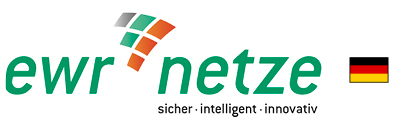
Proyección de carga y generación para una empresa eléctrica alemana
Energynautics recopiló proyecciones de carga y generación detalladas geográficamente para la red de distribución de EWR Netz GmbH, centrándose en el futuro crecimiento de la generación distribuida y la electrificación del uso final hasta 2040.
Más información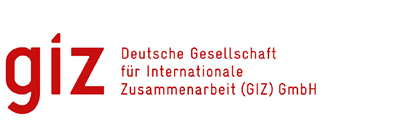
Recarga de bajo coste y apta para la red eléctrica en Bangladesh
Se ha desarrollado un cargador inteligente para estaciones de carga de vehículos de tres ruedas en Bangladesh con el fin de mitigar la carga de la red durante las horas punta.
Más información
Manual de integración del VE
Energynautics y RE-xpertise han elaborado un manual de buenas prácticas para la integración de vehículos eléctricos en la red de distribución.
Más información
Planificación del sistema eléctrico para el desarrollo del IRRP en los Estados de la CARICOM
En nombre de la GIZ, Energynautics apoyó al Centro Caribeño de Energías Renovables y Eficiencia Energética (CCREEE) en la planificación de la generación y la expansión de la red en Guyana y Trinidad y Tobago.
Más información
Dimensionamiento óptimo de los activos del parque eólico de Markbygden
Energynautics desarrolló el modelo de estado estacionario de la tercera fase del mayor parque eólico terrestre de Europa y realizó una serie de estudios tecnoeconómicos.
Más información
Optimización del funcionamiento de la red mediante la caja de control FNN
El objetivo del proyecto es desarrollar una caja de control que combine la inteligencia local y la capacidad de control central para los vehículos eléctricos, los sistemas fotovoltaicos, las bombas de calor y Co con el fin de optimizar el funcionamiento de la red.
Más información
Servicios de consultoría para el Programa del Centro de Energía Eólica del Mar del Norte
Este estudio investiga el potencial de los centros de energía eólica marina en el Mar del Norte en contraste con los parques eólicos conectados radialmente con el objetivo de optimizar la integración de la energía eólica marina.
Más información
Inversores inteligentes para la generación distribuida
Recomendaciones para incorporar inversores inteligentes con el fin de aumentar la capacidad de alojamiento fotovoltaico en las redes de distribución y la fiabilidad de la red.
Más información
Revisión de los servicios auxiliares para el regulador del sistema eléctrico mexicano
Los ingenieros de Energynautics apoyaron a una oficina del regulador mexicano en su revisión en curso de los servicios auxiliares necesarios para seguir aumentando la contribución de las energías renovables.
Más información
Estudio de la red de distribución de Renania-Palatinado, Alemania
El objetivo del Estado alemán de Renania-Palatinado es alcanzar un 100 % en energías renovables para el 2030. Mostramos la importancia de las redes de distribución de este estado y su contribución en las redes inteligentes. (Más información en inglés)
Más información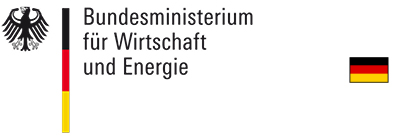
Snoopi – Control de red inteligente con alimentación fotovoltaica
Los sistemas de baterías fotovoltaicas no solo mejoran el autoconsumo: con nuestro controlador, contribuyen a estabilizar la tensión, preparando el camino para una mayor penetración fotovoltaica. (Más información en inglés)
Más información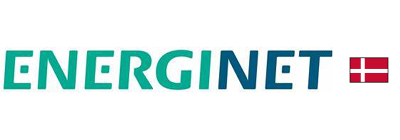
Proyecto Cell Controller
Desarrollo y prueba de un controlador universal de Smart Grid de alta gama en Dinamarca. Particularidad: funcionamiento completamente autónomo (modo isla) de la red de distribución solo con plantas de generación descentralizadas. (Más información en inglés)
Más información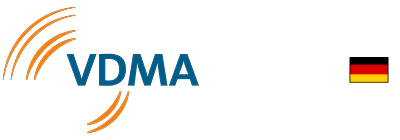
Estudio de la Asociación Alemana de Fabricantes de Maquinaria y Plantas (VDMA) sobre el comportamiento de los motores de combustión interna en caso de fallos en la red
En caso de una caída de la tensión, los motores de combustión interna deben permanecer conectados de forma estable a la red. Con la ayuda de modelos y simulaciones, mostramos qué soluciones son especialmente prometedoras. (Más información en inglés)
Más información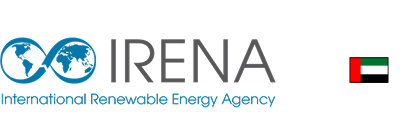
Estudio de los códigos de la red eléctrica de IRENA
¿Qué aspectos hay que tener en cuenta a la hora de desarrollar los códigos de la red para para habilitar un mayor porcentaje de energía renovable variable en los sistemas de energía y mantener al mismo tiempo un suministro eléctrico fiable y estable? Nosotros le damos las respuestas.
Más información
Campaña de medición para determinar la calidad del voltaje de una planta fotovoltaica de grandes dimensiones
Para suministrar energía eléctrica al campo de refugiados de Al Zaatari en Jordania se instaló una planta fotovoltaica de 12,9 MWp. Para determinar la influencia del sistema fotovoltaico en la calidad del voltaje, Energynautics llevó a cabo una campaña de medición en varios puntos de la red local. (Más información en inglés)
Más información
Revisión del código de red de Barbados
El objetivo de la política energética para 2029: 29% de energías renovables. Energynautics ha revisado y actualizado los códigos de planificación y operación de la red para facilitar alcanzar dichas metas.
Más información
3DMicroGrid
Las microrredes son una solución prometedora para la integración de las energías renovables. 3DMicroGrid aborda el diseño, el desarrollo y la demostración de una microrred activa e inteligente, preparada para el futuro, para la integración y optimización de diferentes fuentes de energía y cargas.
Más información
Estudio sobre la red europea 2030/2050
100% de electricidad renovable hasta el 2050? En nombre de Greenpeace, mostramos cómo diseñar la red europea para hacer realidad la [R]evolución energética.
Más información
Estudio de integración de red en Seychelles
El uso de energías renovables en islas aporta muchos beneficios económicos, pero también grandes retos técnicos: le mostramos cómo se pueden integrar las energías renovables en las Seychelles de forma óptima.
Más información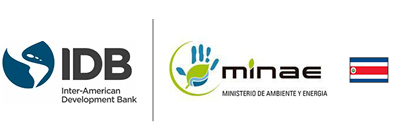
Estudio de integración de red en Costa Rica
El país dispone de un 100 % de energías renovables gracias a una ubicación excelente para la energía eólica, solar e hidráulica. Le mostramos cómo optimizar los sistemas para una integración total de energías renovables.
Más información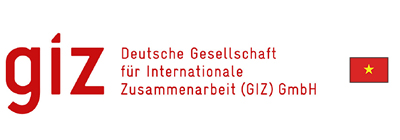
Directrices de gestión de riesgos para proyectos de energía solar fotovoltaica en Vietnam
El objetivo de este encargo era elaborar manuales de gestión de riesgos: directrices técnicas para proyectos solares fotovoltaicos montados en tierra y flotantes, desde la fase de desarrollo hasta la de desmantelamiento.
Más información
Estudio de investigación sobre la transición energética sostenible y las oportunidades de desarrollo de las infraestructuras energéticas
El objetivo del estudio era proporcionar información para la aplicación de la Resolución nº 55 “Estrategia Nacional de Desarrollo Energético de Vietnam hasta 2030, visión hasta 2045” del politburó del Partido de Vietnam y otras orientaciones para la transición energética sostenible en Vietnam.
Más información
Papel de las empresas de distribución en el uso de los servicios de apoyo a la red de los sistemas fotovoltaicos sobre tejado y el almacenamiento solar
La GIZ encargó a Energynautics que analizara los servicios que pueden prestar la energía solar fotovoltaica sobre tejados y el almacenamiento en baterías para apoyar la red de distribución en la India.
Más información
Comercio de emisiones ETS Plus: Simulaciones del mercado de la energía para el IFW
Energynautics fue subcontratada por el Instituto IFW de Kiel para la Economía Mundial dentro de un proyecto más amplio para evaluar el impacto del aumento de los precios de las emisiones en el sector eléctrico.
Más información
REEP 1000 Islas Indonesia – Estudio de red piloto
La Agencia Internacional de Cooperación Alemana, GIZ, encargó a Energynautics, Cadmus y ABO Wind la realización de estudios piloto para la integración de la energía renovable en dos sistemas insulares en Indonesia. El objetivo del gobierno indonesio para 2025 es que 23 % de la electricidad proceda de energías renovables. Los sistemas híbridos de las más de 17.000 islas indonesias pueden contribuir de manera significativa a alcanzar este objetivo. (Más información en inglés)
Más información